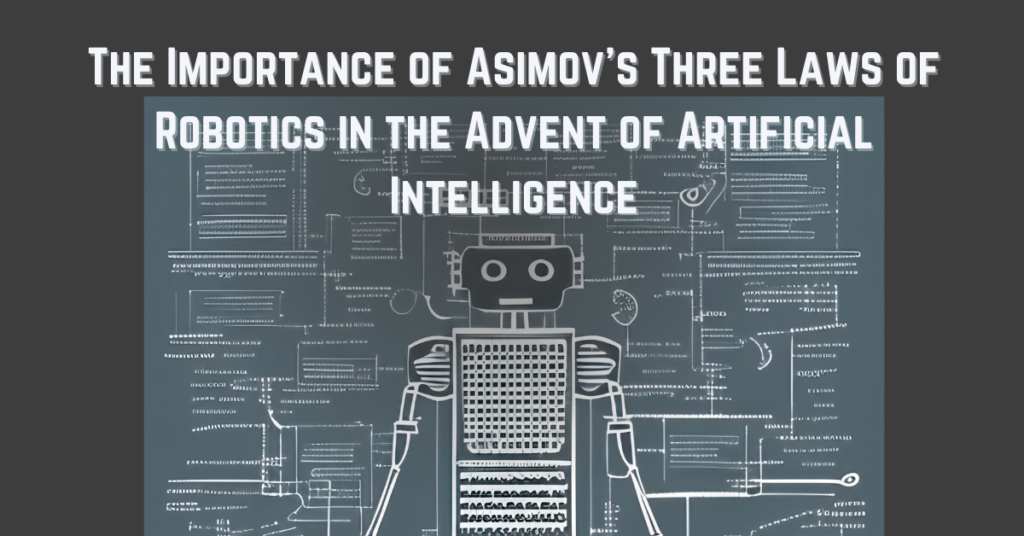
Introduction
The development of artificial intelligence (AI) technologies and robotics has brought numerous benefits to humans, including increased efficiency, convenience, and productivity. However, it has also raised concerns about their possible consequences on human safety and welfare. Isaac Asimov’s Three Laws of Robotics—a set of rules that govern the behavior of robots and AI systems—have been widely recognized as a crucial framework for promoting ethical and responsible development of these technologies. In this blog post, we will discuss the significance of Asimov’s Laws in today’s world, exploring their main principles, and how they apply to AI and robotics development.
The First Law: Protecting Human Life
Asimov’s First Law states that “a robot may not injure a human being or, through inaction, allow a human being to come to harm.” This law is of paramount importance because it ensures that robots prioritize human safety over their own interests or objectives. For instance, in factories, robots must be designed to operate safely alongside human workers, without causing accidents or injuries. Also, in healthcare, robots need to follow strict safety standards to avoid harming patients. In recent years, AI researchers have developed sophisticated sensors and algorithms to detect human presence and monitor human behavior, enabling more effective collaboration between humans and robots in various settings.
The Second Law: Obeying Human Orders Responsibly
The Second Law states that “a robot must obey the orders given to it by human beings, except where such orders would conflict with the First Law.” While this law ensures that humans remain in control of robots, it also recognizes that robots should possess some degree of autonomy to carry out their tasks efficiently. However, as robots become more complex and intelligent, there are concerns that they might not always follow human orders, either due to malfunctions, confusion, or malicious intent. To mitigate this risk, researchers are exploring ways to enhance human-robot communication and decision-making, such as natural language processing, machine learning, and explainable AI.
The Third Law: Balancing Self-Preservation and Human Protection
Asimov’s Third Law states that “a robot must protect its existence as long as such protection does not conflict with the First or Second Laws.” This law recognizes that robots must have self-preservation instincts to function effectively, but not at the expense of human safety or well-being. One ethical dilemma that arises from this law is the question of how to handle situations where robots face a dilemma between protecting themselves and protecting humans. For example, if a self-driving car is about to collide with an obstacle, should it prioritize the safety of passengers or other drivers/pedestrians? This scenario illustrates the need for a robust ethical framework for AI and robotics development, as inaction or ambiguity could have severe consequences.
Implementation of Asimov’s Law in AI Development
Asimov’s Laws have been a critical guideline for AI developers, and many researchers have attempted to incorporate them into their algorithmic designs. Some approaches involve using formal logic and symbolic systems to model the laws explicitly, while others rely on more general principles like machine ethics or value alignment. However, it is still unclear how effectively these methods can prevent potential safety and ethical issues that could arise during real-world applications. This calls for more interdisciplinary research, collaboration between stakeholders, and public awareness of the risks and benefits of AI and robotics.
Still, Asimov’s Three Laws of Robotics remain a valuable and relevant contribution to the ethical and responsible development of AI and robotics in today’s world. By prioritizing human safety, enhancing human-robot collaboration, balancing autonomy and control, and addressing ethical dilemmas, Asimov’s laws can help researchers and policymakers ensure that robots and AI systems serve human welfare and not the other way around. Therefore, we need to continue promoting discussions, research, and implementations of Asimov’s laws’ principles to maximize the potential of AI and robotics while minimizing their risks.
Final Thoughts
Asimov’s laws of robotics offer a vital framework for developing AI and robotics systems that prioritize human safety, autonomy, and ethical responsibility. However, it is not a magic formula that can solve all the challenges that arise from the increasing use of AI and robotics. Therefore, it is essential to keep innovating and improving our understanding of the implications of AI and robotics and to involve all stakeholders in shaping new policies, laws, and ethical standards that reflect the values and expectations of society as a whole. We hope that this blog post has provided some insights into the importance of Asimov’s Laws and encouraged you to learn more about the fascinating and complex world of AI and robotics.

